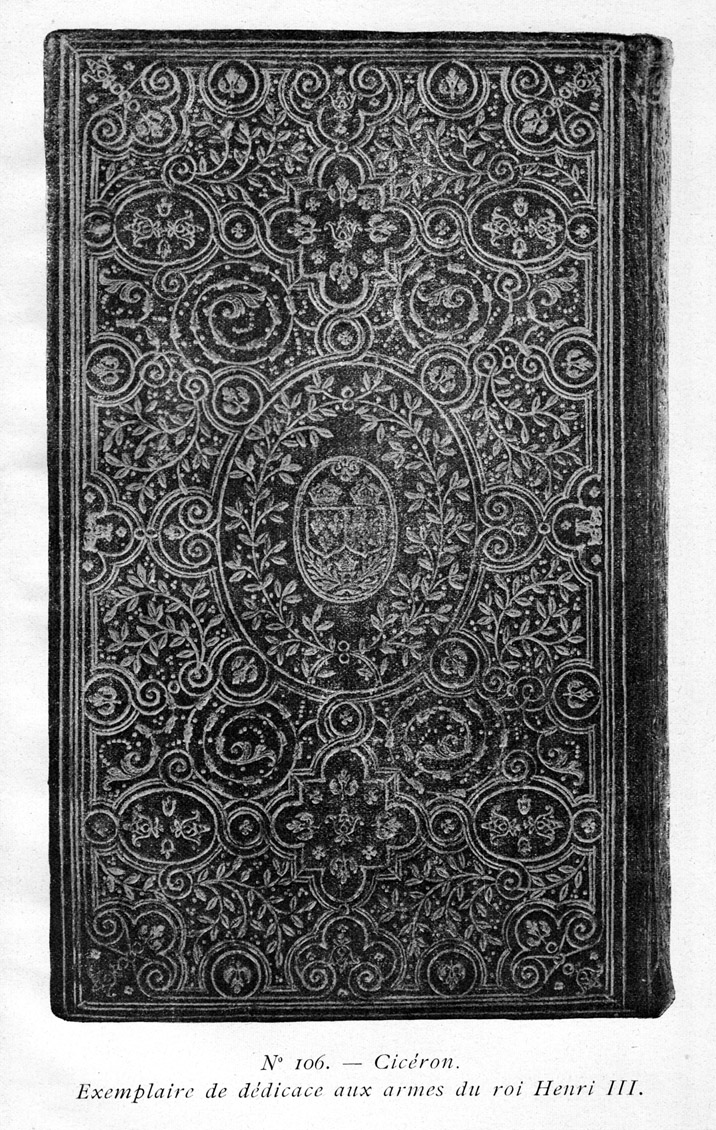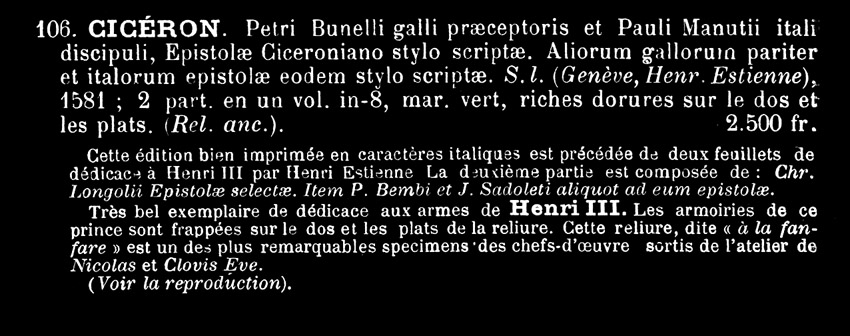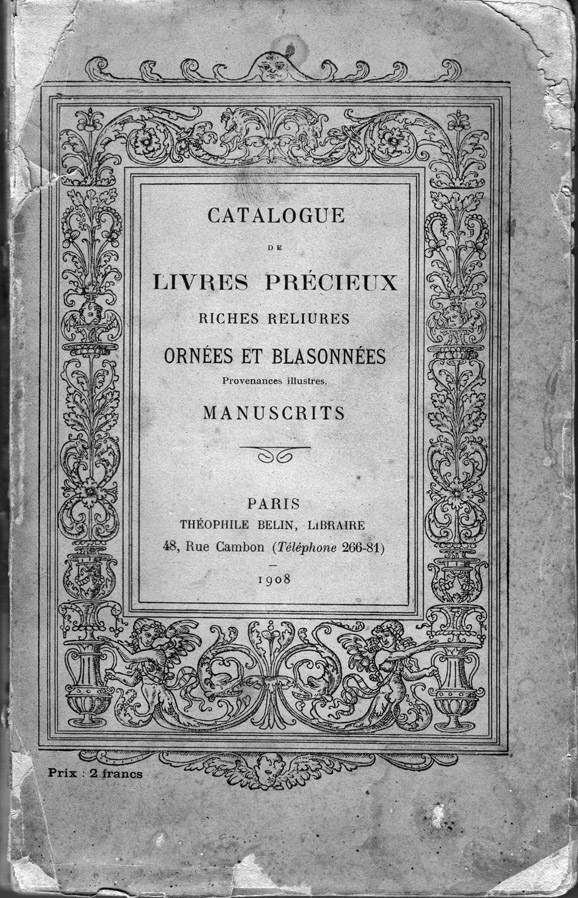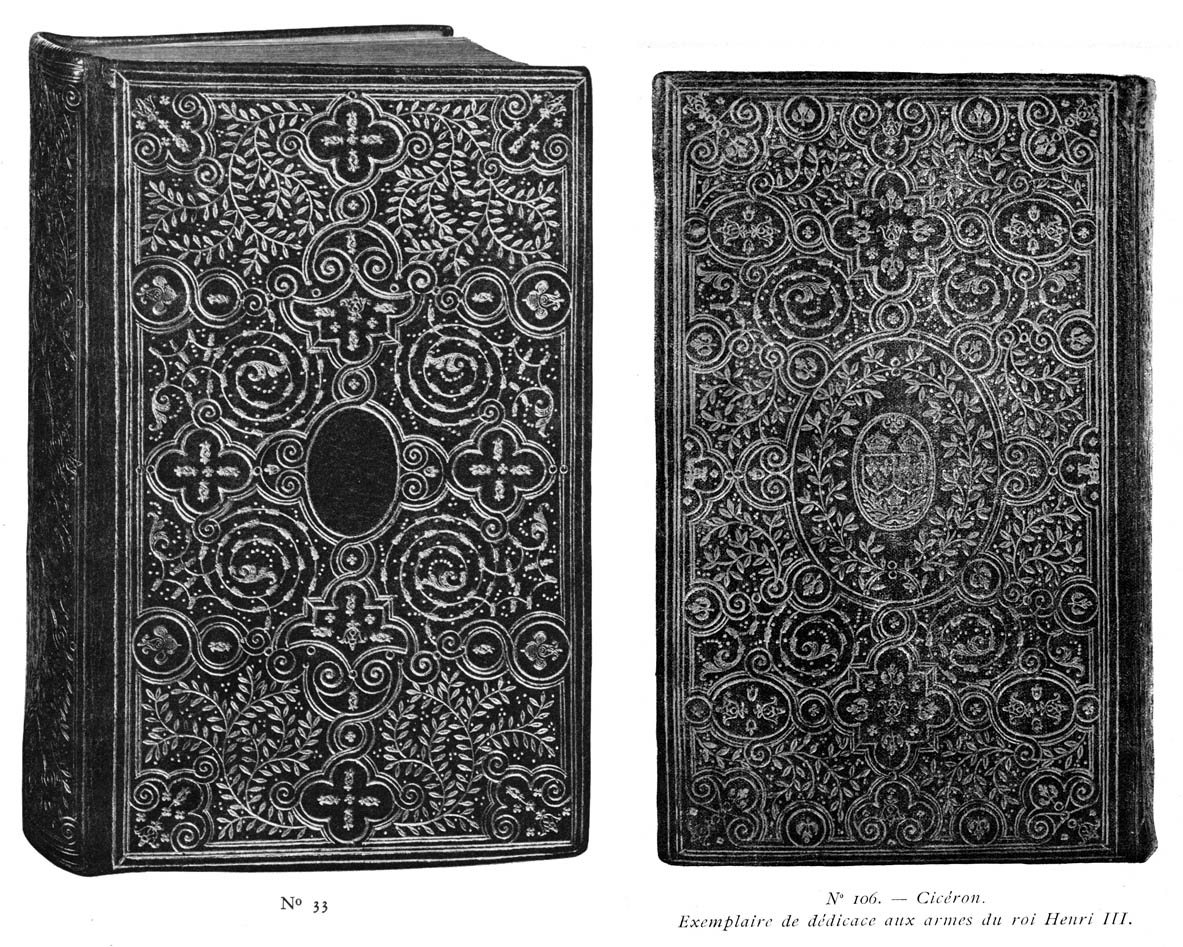


| My next discovery comes from a 1908 catalogue, the cover of which is shown below. You can never have enough of these catelogues, and this one is a real treasure. I have reproduced the detailed notes for this Royal fanfare item 106, it bears the arms of the king, Henri III, and has a dedication to him inside. We read in the information for this item that it has been attributed to the atelier of Nicolas and Clovis Eve! |

| In Comparative Diagram 1, I show Esmerian's item #33 as well as the Royal binding 106 at aproximately the same scale. Esmerian states that his binding was probably made in 1585. Both bindings have identical fleuron in the outer corners as well as identical strapwork surrounding them. The Royal binding has no bud bees but instead, trident fleurons, perhaps indicating that the bees came later. A number of strapwork details are identical even though the centerpiece is quite different. The similarities in these bindings tend to make me think that they may have been made within a few years of each other. The arms of Henri III is of particular importance as a more elaborate example of these arms was brought into use as is well documented by Nixon. |

| When you start investigating the question of whether or not the Eve's bindery ever made fanfare bindings, a subject that is well laid out by Nixon in his book: SIXTEENTH-CENTURY GOLD-TOOLED BOOKBINDINGS IN THE PIERPONT MORGAN LIBRARY. New York: Pierpont Morgan Library, 1971. (pages 218 to 225). You are soon lead into a laborinth of bindings and Royal arms, all of which seems to point to the fact that the 1585 fanfare binding decorated with the royal arms of Henri III shown in Nixon's item 56 was probably made by the Eve's bindery. None of the tooled imprints on that binding match our eBay example or Esmerian's #33 for that matter. I think it may be possible that the Royal binding shown here was made by another atelier possibly as a presentation binding. The arms found on the binding shown above are those of Henri III but may be from an earlier period. These black and white reproductions shown above are not of a quality that will allow a close comparison of the imprints and so we need to find yet a better example, as fate would have it, I did finally find another. |
| click on this link to see the next page: Sotheby's fanfare |
| information about the author | return to the home page of VIRTUAL BOOKBINDING |